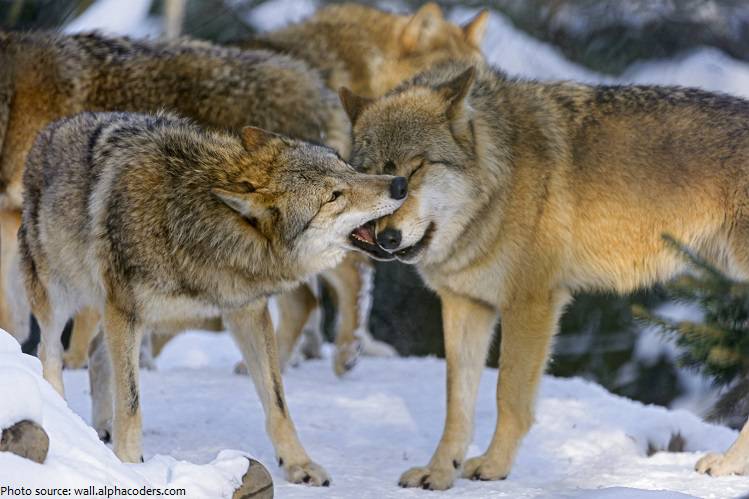
The gray wolf or grey wolf (Canis lupus), also known as the timber wolf or western wolf is one of the world’s best known animals.
There are two widely recognized species of wolves in the world, the red and the gray.
They are native to the wilderness and remote areas of Eurasia and North America.
The grey wolf once had the largest natural distribution of any mammal apart from humans. But it has become extinct across much of its former range and its present distribution is much restricted.
In the lower 48 states, gray wolves were hunted to near extinction, though some populations survived and others have since been reintroduced. Few gray wolves survive in Europe, though many live in Alaska, Canada, and Asia.
Gray wolves can thrive in a diversity of habitats from the tundra to woodlands, forests, grasslands and deserts.
Gray wolves have been known to live a maximum of thirteen years in the wild, though the average lifespan is about 6 to 8 years. They can live up to 15 years in captivity.
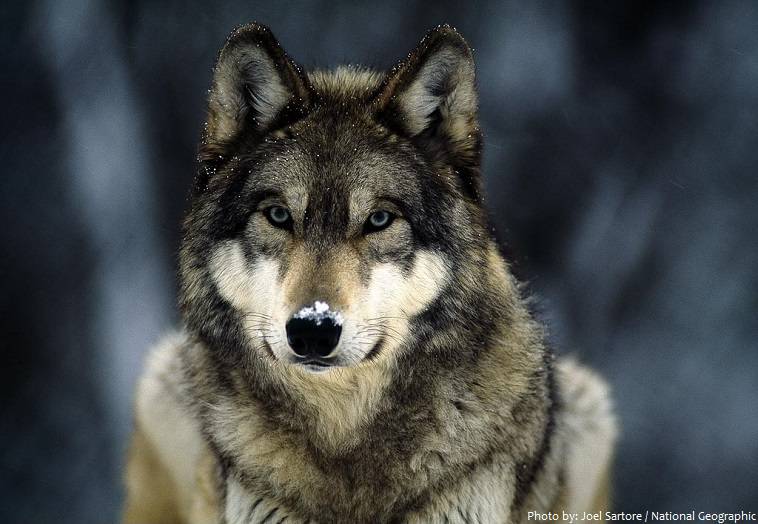
Gray wolves, are the largest members of of the Canidae family, excepting certain large breeds of domestic dog.
On average, adult gray wolves measure 105–160 cm (41–63 in) in length and 80–85 cm (31–33 in) in shoulder height. The tail measures 29–50 cm (11–20 in) in length.
The mean body mass of the extant gray wolf is 40 kg (88 lb), with the smallest specimen recorded at 12 kg (26 lb) and the largest at 80 kg (180 lb). Females typically weigh 2.3–4.5 kg (5–10 lb) less than males.
The gray wolf is a slender, powerfully built animal with a large, deeply descending ribcage, a sloping back and a heavily muscled neck.
The gray wolf’s head is large and heavy, with a wide forehead, strong jaws and a long, blunt muzzle.
They have 42 teeth altogether. These consist of: 12 incisors, 4 canines, 16 pre-molars and 10 carnassials and molars. Their canine teeth can be 2.5 centimeters (1 inch) long.
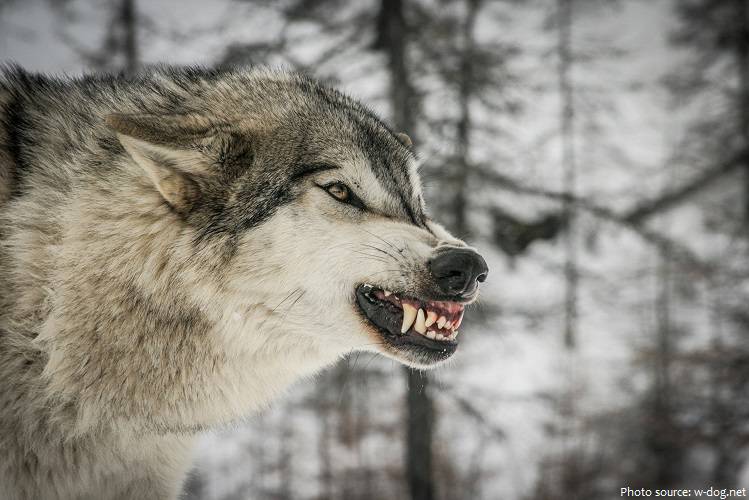
Coat color is typically a mix of gray and brown with buffy facial markings and undersides, but the color can vary from solid white to brown or black.
They have long bushy tails that are often black-tipped.
The gray wolf is a social animal. They live and hunt in packs. The average pack consists of 5 to 11 wolves, but packs as large as 20 to 30 wolves have been found.

The pack is led by an ‘alpha’ male and female, and the rest of the pack is usually made up of their grown-up pups.
Wolves develop close relationships and strong social bonds. They often demonstrate deep affection for their family and may even sacrifice themselves to protect the family unit.
One of the best-known ways wolves communicate is by howling, a soulful song that sounds both melodious and mournful, mysterious and sad.
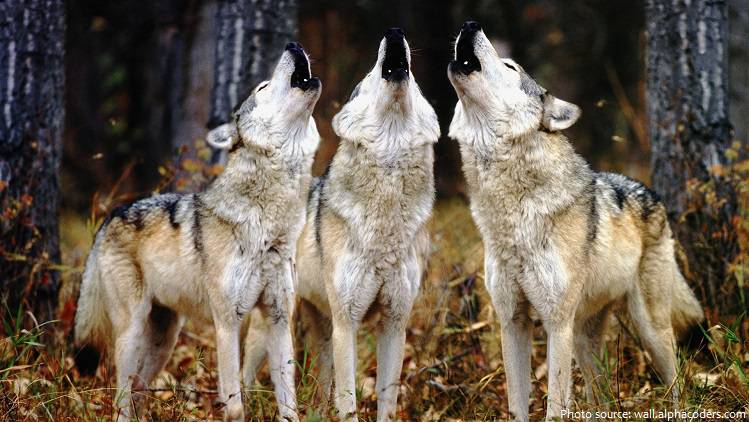
A lone wolf howls to attract the attention of his pack, while communal howls may send territorial messages from one pack to another. Some howls are confrontational. Much like barking domestic dogs, wolves may simply begin howling because a nearby wolf has already begun.
They also whimper and whine, growl and bark, yelp and snarl.
Another way wolves communicate is through body language. If a wolf feels confident, it will approach another wolf with its head and tail held high and ears perked up. If you saw a wolf slinking toward another with its body lowered, its tail between its legs, and its ears flattened, you’d know it was approaching a dominant animal.
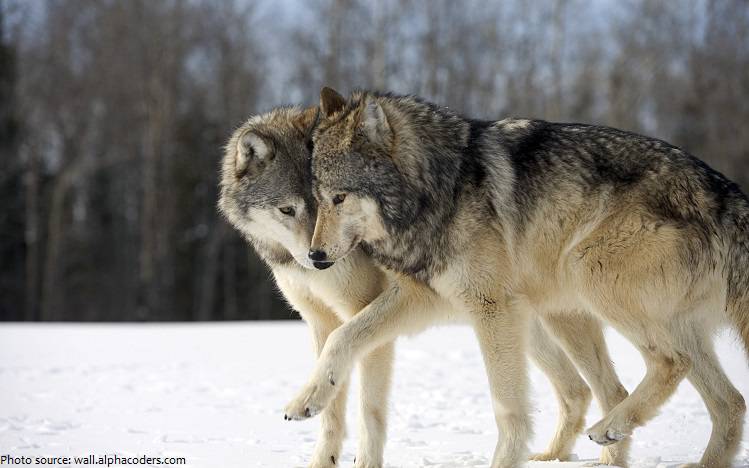
They also use scents produced by their bodies to communicate. One source of scent is urine, which they use to mark territory and to tell other wolves in their own pack where they are.
Wolf packs usually hunt within a territory. Territories can range from 130 square kilometers (50 square miles) to over 2,500 square kilometers (1,000 square miles). Wolves travel as far as they need to in order to find prey.
Wolves are carnivores, which mean they eat meat as their main food source. Grey wolves hunt mostly large, hoofed animals including different kinds of deer, mountain goats, moose, elk, and bison. They will also hunt rabbits, hares, beavers, squirrels, mice, birds and fish. They also eat vegetables and fruits such as apples, pears, blueberries and nightshade. In areas heavily populated by humans they feed on livestock and garbage.

Adults can eat 9 kilograms (20 pounds) of meat in a single meal.
The gray wolf usually travels at a loping pace, placing its paws one directly in front of the other. This gait can be maintained for hours at a rate of 8–9 km/h (5–5.6 mph), and allows the wolf to cover great distances.
The gray wolf can reach a top speed of about 60 kilometers (37 miles) per hour in short bursts.
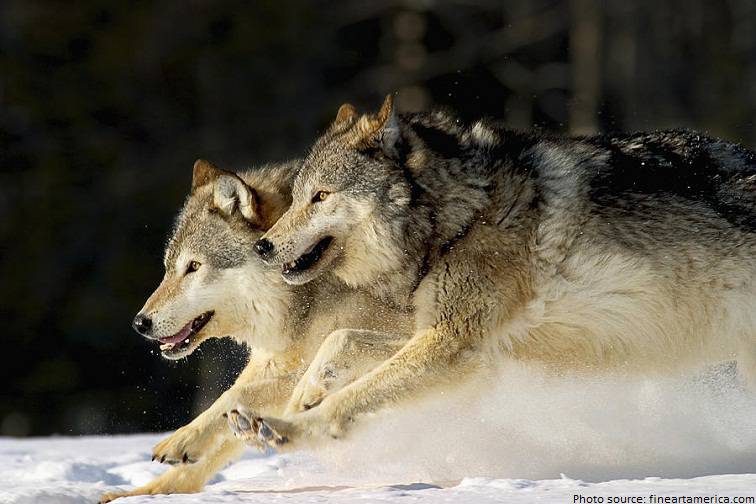
It can leap 5 meters (16 feet) horizontally in a single bound.
Wolves have a sense of hearing twenty times sharper than a human’s and have a sense of smell a hundred times keener.
The alpha female and alpha male wolves of a pack usually mate for life. Usually this male and female are the only animals of the pack to breed.
Mating takes place in late winter or early spring. A litter of 4-6 pups are born 2 months later.
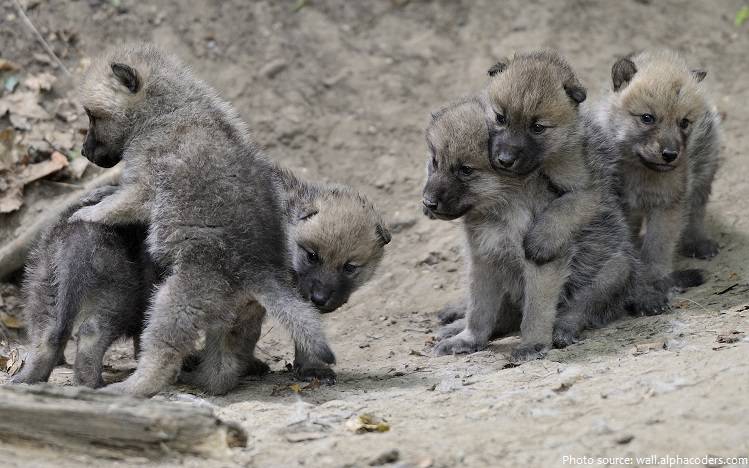
All of a pack’s adults help to care for young pups by bringing them food and watching them while others hunt.
Young wolves stay in their parents’ pack for at least two or three years before some of them take off to join other packs or to start their own.
A new pack is usually founded by an unrelated dispersing male and female, travelling together in search of an area devoid of other hostile packs.
Wolves play a key role in keeping ecosystems healthy. They help keep deer and elk populations in check, which can benefit many other plant and animal species.
In some places they are considered a vulnerable or endangered species.
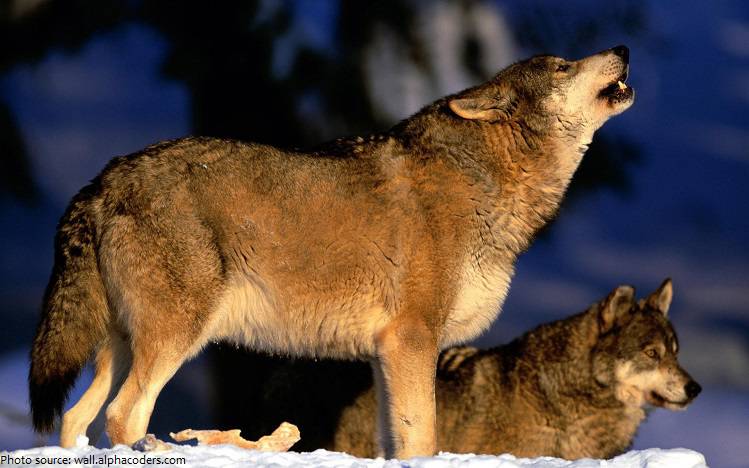
The gray wolf is typically an apex predator (alpha predator) throughout its range, with only humans and tigers posing a serious threat to it.
It is the only species of Canis to have a range encompassing both the Old and New Worlds.
The grey wolf has been the notorious villain of fables and fairy stories for centuries, yet this highly intelligent and sociable animal has done little to warrant its terrifying reputation.
Wolves seldom attack humans, in fact very few records of them doing so exist. As long as there is plenty of natural prey, wolves prefer not to attack domestic livestock.
A wolf which has been driven from the pack or has left of its own accord is called a lone wolf. It avoids contact with packs and rarely howls.
After the last wolf was killed in Yellowstone National Park in 1926, a wolf reintroduction program was implemented in 1995. The program is considered to be a great success—the wolves are reproducing at a rapid rate, and there are currently around 100 wolves in the park.